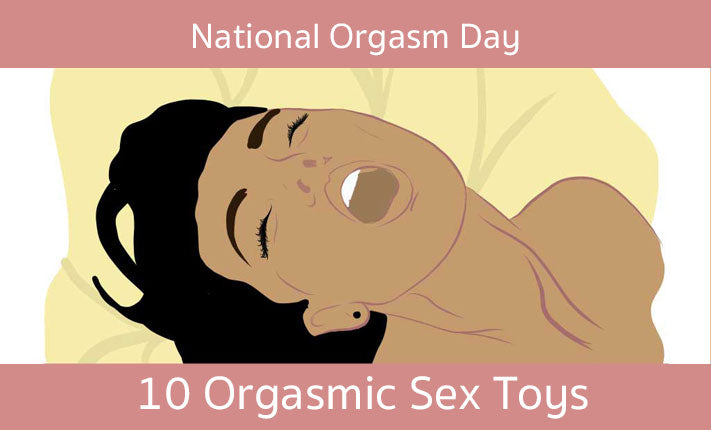Throughout history the female orgasm has been the subject of analysis and interest, both for those who experience them (or not, as the case may be) and for those who hope to help their partners achieve them.
Many ask if female orgasms are real, while others wonder what their purpose is.
Unlike the male orgasm, female orgasm plays no major part in conception, and it can be concluded that only function is to offer pleasure. We're not complaining about this, but we feel the difficulty in achieving orgasms for women, in particular, is a major biological flaw.
There’s plenty of information circulating about the female orgasm, but how much of it is true?
We’re keen to set the record straight about the Big Oh, so read on as we dispel some of the biggest myths and misconceptions surrounding the female orgasm.
All women can have multiple orgasms
In fairness, women who do orgasm have got it pretty good. Many women don't, which isn't to say they won't in the future; this is something that can be learned with time, patience and maybe a little bit of help from a vibrator.
The good news is that once you have learned how it works for you and you can bring on an orgasm, it is possible to keep on coming again and again. This is referred to as multiple orgasms and is often done with continued stimulation of the G-spot.
However, not all women respond to stimulation of their G-spot and as the clitoris tends to get over-stimulated after one orgasm, multiple orgasms aren't something that every woman can just do. It requires knowledge of how your body works, the right tools (fingers, penis or toy) and lots of practice.
Positioning makes no difference when it comes to reaching an orgasm
We're calling time on this belief.
A position that works for you could mean having a toe-curling climax whilst a position that doesn't stimulate your hotspots in the right way may mean a lukewarm 'meh' experience...
The best position varies from person to person: for some women, this means being on top. This allows either themselves or their partner to stimulate their clitoris with their fingers. Since most women don't orgasm from vaginal penetration alone, having easy access to the clitoris can be crucial when it comes to coming.
For other women this may mean being flat on their backs - despite its reputation for being 'dull', the missionary position can be really useful for orgasm-surety. It allows you to rock your hips back and forth, or grind against your partners pubic bone. Again, it is most often the stimulation of the clitoris that makes the magic happen.
A good starting point is trying to recreate your favorite solo-sesh position but with a toy or penis joining the party.
It’s okay to fake orgasms
Pretty much everyone has been there at some point. A partner is giving it their all, but nothing happens and the pressure to orgasm so the partner can feel they've done a good job builds, and before you know it, a bit of loud moaning makes it seem like a fantastic orgasm just happened. The partner is happy, you are happy(-ish) and at least they had a great time even if you didn't... Catch 22.
The problem with faking is that it lets your partner believe that you experienced an incredible orgasm when you didn't.
Each person is responsible for their own orgasm, and having an honest and open conversation about what you like and what gets you off will ensure next encounter is both better and hotter.

































1 comment
The male orgasm isn’t necessary for procreation either. While ejaculation and orgasm in men normally coincide they aren’t the same thing and don’t always come together. When I was younger and better able to control these things I could sometimes separate them, cumming without squirting as this would almost always allow me to keep going and cum again. The other way around is a deeply distressing event though. Often they come a few seconds apart and are two distinct event. The first time I came due to anal stimulation I remember the incredible sensations as the sperm shot up through penis before my mind exploded in an incredible orgasm.